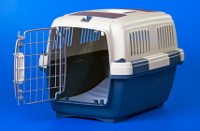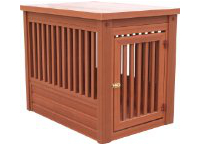FYI: If you buy something through a link on this site I may earn a commission - at NO extra cost to you.
Housebreaking An Older Dog
Housebreaking an older dog successfully is absolutely possible - all it takes is some organization, time, effort and a healthy dose of patience!
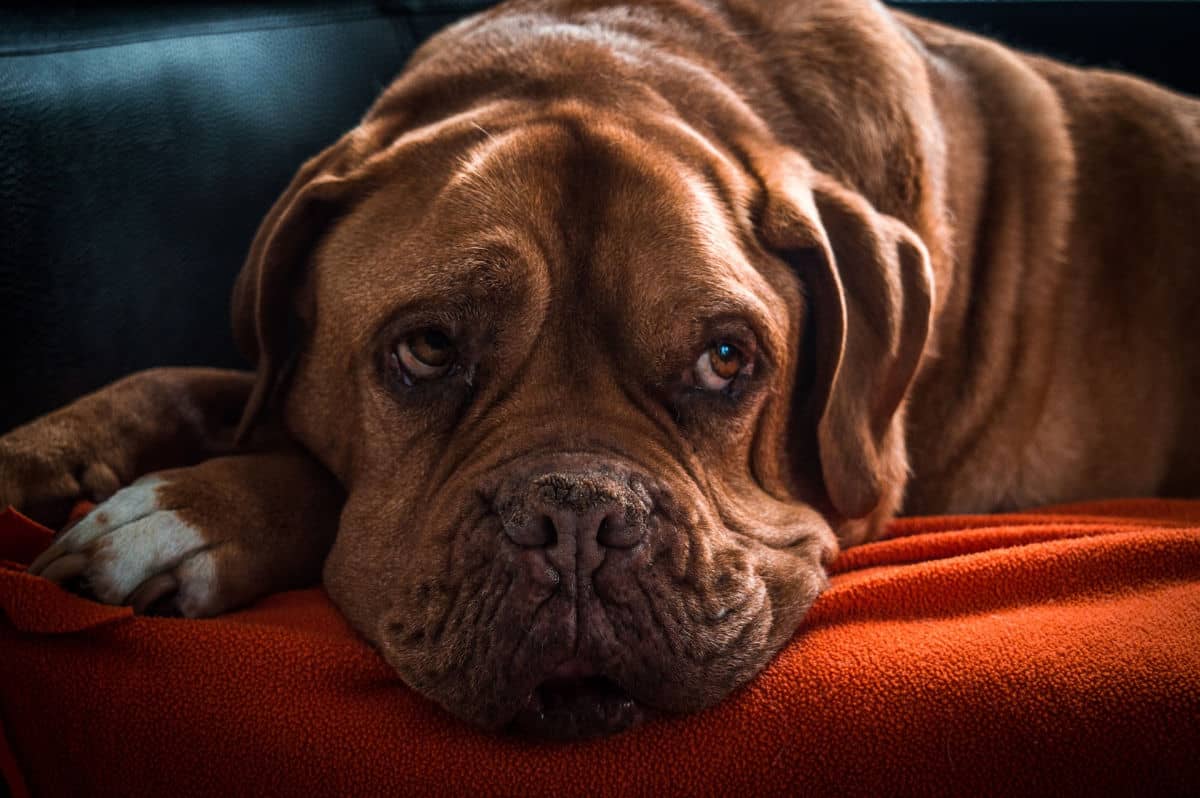
In principle, house training dogs is just the same as house training young puppies. The only difference is that you will need that extra helping of patience because older pups and adult dogs may take a little longer to pick up new behaviors and learn new skills.
Dogs are creatures of habit and the longer they've spent with 'bad' habits the more ingrained they're going to be.
Which means you need to allow Fido a bit of extra time to UN-learn those old/bad habits (such as peeing on the rug or jumping on visitors) as well as learning the new, more acceptable behavior.
BUT he's perfectly capable of learning just about anything you want him to.
How To Potty Train An Older Dog
Good potty habits are usually learned while a dog is young, but there are lots of reasons why your older dog may not have this house-training stuff all figured out yet.
Perhaps he's lived mainly outdoors up until now, or you've adopted/rescued him and his previous owner didn't teach him any potty skills... or he's temporarily forgotten them due to stress/mistreatment/illness and so on.
Whatever the reason for his difficulties, housebreaking an older dog is very straightforward if you use a crate. In fact as Fido matures so does his bladder and bowel control, and this makes the whole process even easier.
Crate training is literally a 'magic wand' when it comes to potty training pups and dogs of ALL ages.
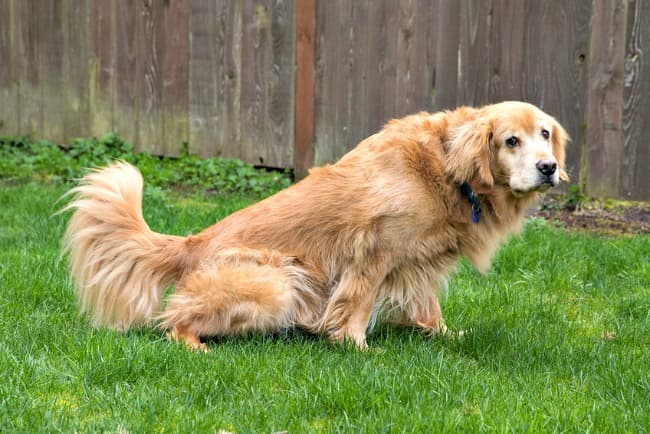
Crate Training Basics
Generally speaking, a sturdy plastic crate is best for house-training purposes because they're by far the easiest style to clean. They're also the most 'den-like' which makes your pet feel safe and secure.
When you're training older dogs wire crates or even more decorative designs (such as wood or wicker crates) are also viable options, but I'd still suggest sticking with a simple plastic crate to start with.
The wire designs aren't quite so easy to clean, but not too tricky, and the 360 degree visibility helps Fido to feel as though he's 'in the thick of things' even when he's crated.
If you buy one and find that your dog doesn't like the 'open' feel of this type of crate, you can throw a blanket over it, or buy a special crate cover, to make it more private for him.
Higher-end wooden/wicker crates look great with any decor.
There are all sorts of styles, materials, designs and so on to choose from so just choose whichever one you feel is the best fit for you and your pooch.
The whole point of using a crate is that it keeps your dog confined whenever you can't be watching him or with him.
This prevents him from having the opportunity to pee/poop on the rug, or under the table, or upstairs or in whichever potty spot he may have chosen for himself.
Plus, dogs are den animals by nature and they instinctively try really hard not to mess where they sleep. That means your dog will try to 'hold it' when he's crated - as long as you don't overdo it.
The key to successful housetraining is to make sure that you cut out (as much as possible) any chance for Fido to eliminate indoors.
Because dogs are creatures of habit, if you make sure he only has the opportunity to pee/poop where you want him to, he'll soon want to go there when he needs to do his business - it's becoming a habit!
Once your older dog has fallen into the routine of going outside to eliminate you'll be able to cut back on the amount of time he spends in his crate because he'll no longer be in the habit of messing indoors anymore... he'll want to go outside instead.
Crate Training - step by step
If your older dog has never been in a crate before you'll need to give him time to adjust to the experience - don't just put him in there and walk away!
Some dogs might accept this and just take a nap, but many won't and you don't want his introduction to this valuable tool to be stressful.
Start by setting up his crate in the kitchen, living room or other room that he's going to be spending a lot of time in.
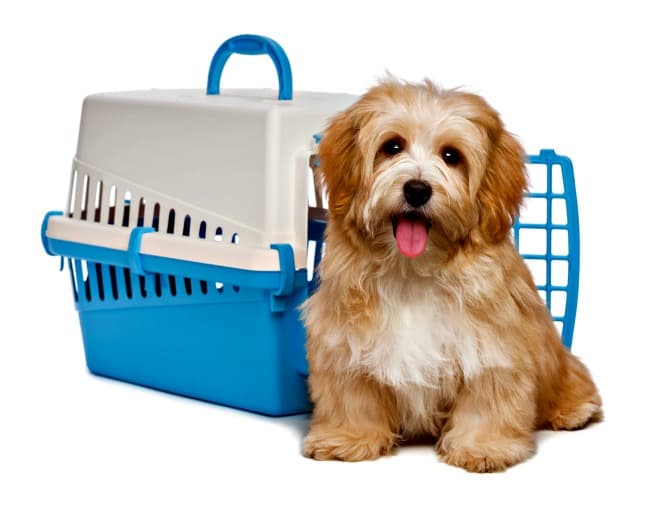
getting familiar with the crate
- Take the door off at first if possible, or tie it open securely (you don't want it to shut him in accidentally, or smack him on his butt and scare him!)
- Put a sturdy, new toy in there for him to find and throw in a couple of tasty treats and then let him investigate it himself
- He may go right in, or he may treat it like an unexploded bomb for a while, but eventually Fido will get inside and gobble up those treats (he'll also grab the toy and carry it off someplace else to play with it. That's okay!)
- Just leave the crate where it is and every now and then throw another treat or two inside. Ignore your dog's comings, goings and investigations and let him get used to this new object over several days if you can. At least a day or two if you can't manage longer
- Once he seems okay with it all, call him to you and throw a particularly delicious treat right to the back of the crate and tell him to 'get in'
- If he doesn't go right away, help him inside and then close the crate door and pass him another treat through the wire, say 'good boy', and then walk away
- Most dogs will bark, whine, complain or fuss at first. It's natural behavior - he wants to follow you! Just ignore the fuss, he will stop given time
- To begin with you want to let Fido stay in his crate until he's been quiet and settled down for a little while
- Then open the door, say 'time to get out' or just 'okay' (or something similar) and take him outdoors right away and encourage him to do his business
USEFUL TIP!
Try never to let your dog out of his crate while he's still complaining... but if he's been napping or resting and then gets up and starts to whine or fuss, he may need to 'go'.
When you're housebreaking an older dog don't forget to always give him tons of praise (and a tasty reward doesn't hurt either) when he pees/poops in YOUR designated area.
He needs to know that he's doing the right thing and positive rewards-based training for a job well done is much more successful than punishment for his mistakes.
When you bring him back in you can either let him have free access to your home if you're able to supervise him, or put him back into his crate.
When you're able to be with your dog and watching him fairly closely he doesn't need to be crated. Just keep your eyes open for signs that he needs to 'go'.
These usually include circling and intense sniffing of a specific area, but some dogs just squat mid stride so you'll need to be on the ball until you're familiar with Fido's individual body language.
Unlike a young puppy, your dog won't need to pee every time hour, or even every time you take him outside/to his potty area. Usually an adult or older dog only NEEDS a potty break three or four times during the day.
But if you have an elderly dog, or one whose bladder/bowel control isn't as good as it used to be then you'll need to take him out more often - perhaps even as often as if he were a puppy.
Each dog's individual habits will vary but Fido will most likely need to go outside:
- as soon as he wakes up
- after his morning meal (or mid-morning)
- when you get home from work (or late afternoon)
- after his dinner and lastly, before bed-time
A regular schedule for meal-times and predictable daily routine helps regulate your dog's digestive system and makes potty-breaks needs more predictable.
Although it's not a good idea to give puppies bedding, blankets or crate pads because they have a tendency to chew them up, with adult dogs this is usually fine.
BUT if you find that Fido feels that it's okay to pee on his blanket, remove it right away, clean the crate and keep soft toys/pads/blankets out of there until he's got the hang of the whole crate training thing.
One last tip... don't expect too much from your dog, too fast!
Unrealistic expectations cause almost as much frustration and upset as the undesirable behavior itself.
Puppies learn very quickly, but just as older people are slower to learn than grade-school children, older dogs need extra time to learn new habits and behaviors and to 'connect the dots'.
Getting angry with Fido or punishing him for having an accident indoors won't make him learn any more quickly... and in fact, if he's eliminated in the house then it's just as much YOUR mistake because you were not supervising him closely enough.
Dogs and people both respond much better to the carrot than the whip.
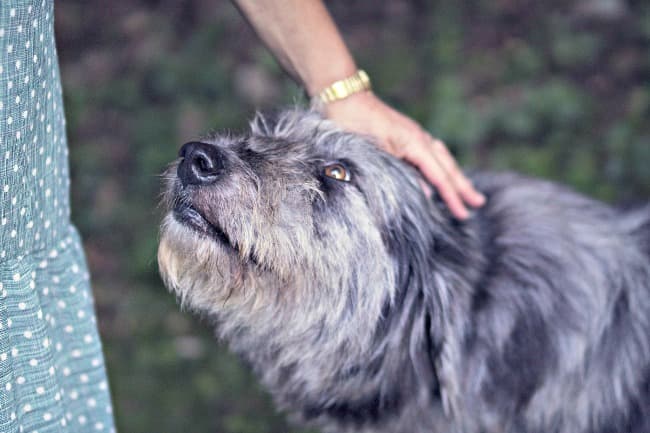
So make it easy for your dog to get it right by using the crate and supervision properly.
Then pour on the praise and limit your corrections to a firm 'NO' and a quick trip outdoors if he's given the chance to get it wrong.
With love, patience and consistency you will be able to housebreak your older dog... and it will be worth the time and effort.
If you want to learn more about training your adult dog - including basic obedience, leash walking and socialization - check out Training Your Older Dog
you might also like...
- Home
- Housebreaking an Older Dog
FTC Disclosure: Some pages on this site contain affiliate links. I may earn on qualified purchases.
